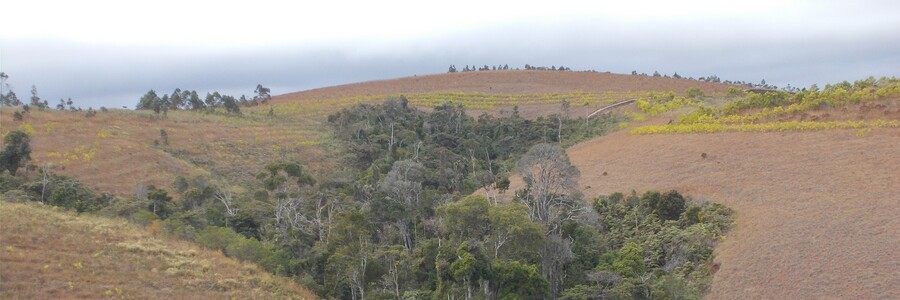Madagascar and its rainforests
Madagascar is one of the "older islands" in the history of the earth, which means that the island has been separated from the African and Indian mainland for about 90 million years. As a result, it has a special biodiversity and variety of species. Before the first settlers inhabited the island, up to 90 percent of the land, or nearly 53 million hectares, was forested. Today, only about ten percent of this forestation remains.
Malagasy
The inhabitants of Madagascar are among the poorest people in the world. The majority of the population lives in extreme poverty and is undernourished. While the average lifespan in Germany is around 81 years, it is only 65 in Madagascar. There are plenty of reasons for this: on the one hand, the low average lifespan can be attributed to the rapid growth of the population, as well as mismanagement and poor governance, which have ruined Madagascar economically. For another, there is little access to clean drinking water, which people often get only when they need medical care. A large proportion of Madagascans also work in agriculture, where often only a small income can be earned.
Slash-and-burn and deforestation as a way out
To cope with the rapid population growth and the resulting demand for food, Madagascar's rainforests are often cleared and slash-and-burn. This creates fertile agricultural land, which is otherwise often scarce due to monoculture cultivation and a lack of tillage. Another advantage that the Malagasy derive from slash and burn is the use of the resulting ash as fertilizer. For this purpose, trees and plants are first cleared and left to dry for a certain time. Then they are set on fire so that the ashes can be worked into the soil after the burning process. In order to allow only certain areas to burn, the slash-and-burn process is usually monitored, but it is not always possible to limit the fire. It is not uncommon for the fire to spread to intact rainforest.
Goals of the project
To ensure the long-term success of our reforestation project, our project is not only about planting trees, but also about supporting local farmers. With the help of the Dynamic Agroforestry cultivation method, we want to show the farmers an agricultural perspective far away from slash-and-burn and deforestation. Besides increasing the yield and the financial means available, we also want to show them a way of life in harmony with nature.
Interested in the project and want to learn more? Then click here.

